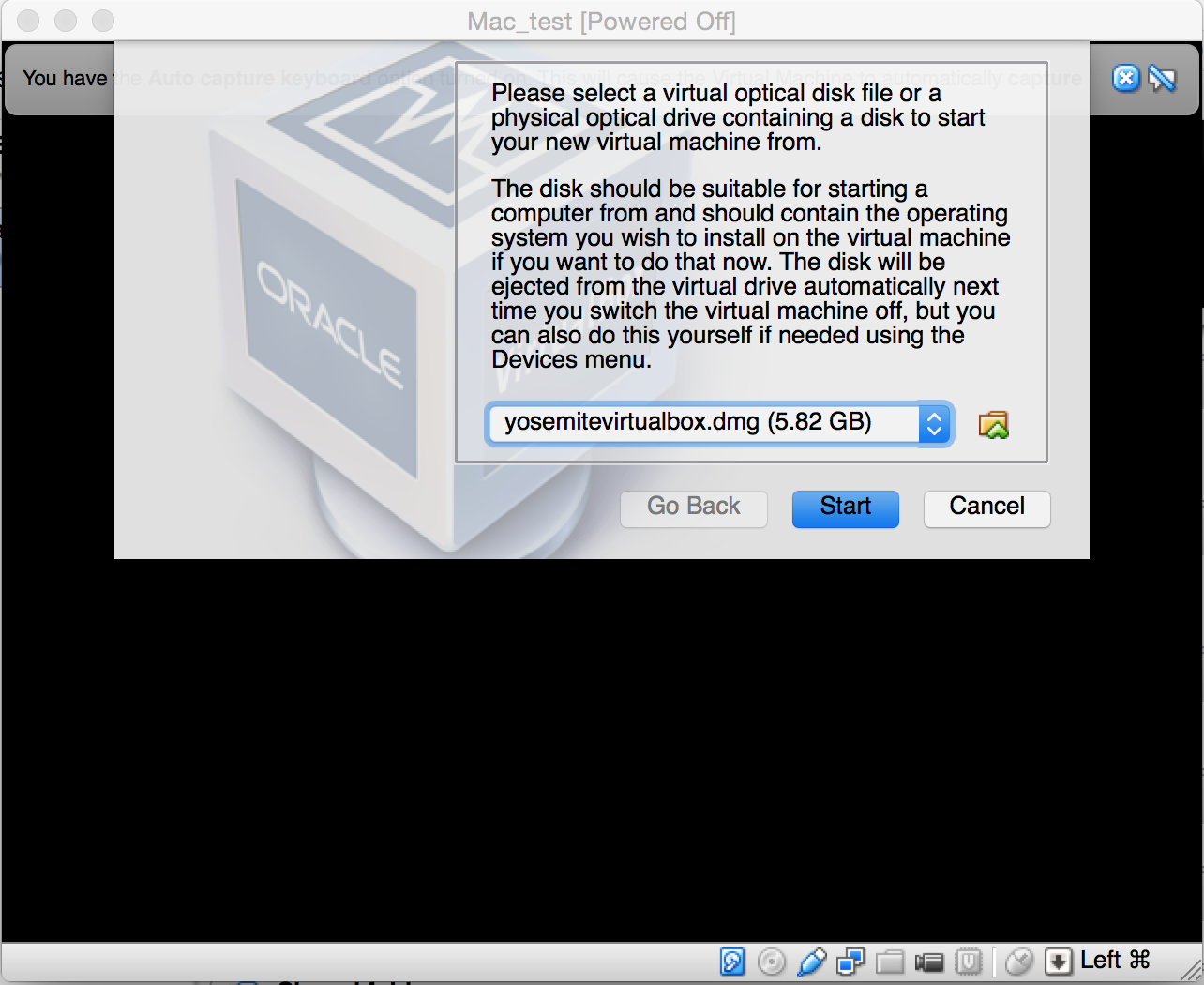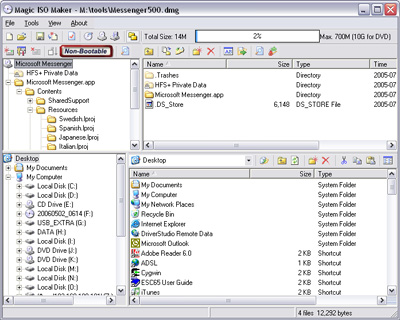To convert DMG file to ISO format, please follow the steps, 1. Run AnyBurn, and click 'Convert image files'. Convert DMG to ISO options. When trying to convert a DMG to a ISO or CDR file for MacOS X, we have two options available. The first one is by using just Disk Utility, a preferred method if you don’t like working with Terminal. The second method is by using the command line by using Terminal.
So you’re running Linux on your computer, maybe Ubuntu, and you have some files with the .dmg extension. In this guide, we’re going to talk about how to open, mount, extract, and otherwise get your files from these pesky DMG images. You could always just extract the files on a Mac, then transfer them back to your Linux machine. But if you really want to do this on Linux, without having to rely on Mac, here’s how to do it.
What are DMG image files?
Simply put, it’s a kind of image file. But not an image like a jpeg is an image. DMG is Apple’s proprietary disk image format, native to Mac OS X. There are actually a whole bunch of different types, format and options within this format. There are options for encryption, compression, and different kinds of partition schemes, among others. Unfortunately, this can make things pretty confusing when we’re trying to gain access to the data contained in one of these images.
DMG images are typically a kind of Universal Disk Image Format (UDIF), although there are others, namely NDIF and SPARSE. Although the .dmg file extension is usually used, they can also sometimes have an .img extension, or in some cases no extension at all. Their MIME type is application/x-apple-diskimage.
The HFS/HFS+ (Mac OS Extended/Journaled) file system is typically used in DMGs. However, this isn’t always the case. You may also sometimes find FAT and ExFAT files systems, as well as variations on HFS.
Does my system support DMG?
Perhaps the biggest hurdle to overcome when trying to work with DMG files is working with the HFS file system (Mac OS Extended). Linux supports HFS through the “hfs” and “hfsplus” kernel modules.
There’s an easy way to test if your system has these kernel modules. Plug in a USB drive formatted with the Mac OS Extended file system. If your particular distribution doesn’t have the appropriate modules, you will likely get an error message. On Ubuntu, you’ll get a popup window declaring “Ubuntu: Unable to mount

Alternatively, we can see if the kernel module files are present with find:
We want to see two files: “hfs.ko” and “hfsplus.ko”. If find doesn’t return these files, your system probably doesn’t support HFS.
You could also try “modinfo”: modinfo hfs and modinfo hfsplus should return something like:
If you get 'modinfo: ERROR: Module hfsplus not found' your system doesn’t have these modules.
Not all Linux kernels and distributions support HFS. This is especially the case for certain distributions that are a few years old. If you have kernel support for HFS, great! If not, don’t worry. There are still ways to extract data from your DMG files. While it’s nice to have the option to mount the images we’re working with, this is really the only functionality we’re losing without having the hfs and hfsplus modules. The two programs we’re going to use later on (P7ZIP and dmg2img) do not require kernel support to function.
What kinds of DMG images can be opened in Linux?

This guide is about how to open, mount, and extract files from read/write, read only, and compressed DMG image files. The following partition schemes have all been tested with the techniques discussed here.
- Apple Partition Map
- CD/DVD (partitioned)
- CD/DVD (partitioned) with ISO data
- Hard disk
- Master Boot Record Partition Map
- No partition map
This guide does not cover how to handle sparse disk images (.sparseimage), sparse bundle disk images (.sparsebundle), or CD/DVD masters. DMG images with partition scheme types of “CD/DVD” and “GUID Partition Map” do not appear to work with the techniques described here.
Option 1: Mount the DMG
If the Linux distribution you’re on has HFS support in the kernel (Ubuntu 14.04.1 LTS supports it), it’s pretty easy to just mount the DMG image:
We’re using “sudo” because we need root privileges to mount things. The HFS+ file system type is specified with “-t hfsplus”. The “/mnt” at the end of the command specifies where we’re mounting the image.
Unmount the image with sudo umount /mnt
If you get a wrong fs type message like the one below, it means the DMG file is either of an unsupported type, or it’s compressed. Unsupported images include sparse images, sparse disk bundles, CD/DVD masters, and images with partition schemes of the CD/DVD or GUID Partition Map types.
Use “file” to learn a little more about the image file:
If you get image.dmg: x86boot sector that means it’s probably using a GUID Partition Map and isn’t supported. This isn’t good, however, it’s also not too terribly common.
What’s more common is to see something like this:
If mounting isn’t working, and this is what you’re seeing with “file image.dmg”, then you’re luck!. Our problems are being caused by compression. Linux doesn’t like to mount compressed DMG images. To get around this little obstacle, we’ll use dmg2img (see below).
Option 2: Use dmg2img for compressed images
So you have a DMG image that you can’t mount because it’s compressed. You’ve done “file compressed_image.dmg” and you got “compressed_image.dmg: bzip2 compressed data”. The fix? That’s easy: use dmg2img to convert it to an uncompressed image. Once you run the image through dmg2img you should be able to mount it no problem.
Convert Dmg To Iso Ubuntu
Don’t have dmg2img? It’s usually pretty easy to get using your distribution’s package management. On Ubuntu, you’d do:
Using dmg2img isn’t very difficult. Type “dmg2img” into the command line followed by the name of the DMG file you want to decompress. The Mac OS X version of Firefox is a good example of a compressed DMG file.
Now mount the resulting .img file:
Option 3: Extract DMG contents with P7ZIP
P7ZIP is awesome. It’s the Linux/BSD version of 7-Zip. Check out their SourceForge page here With it you can literally extract files from any kind of image or archive. Just kidding… It doesn’t really work with every format conceivable. However, it can handle (in alphabetical order): ARJ, CAB, CHM, CPIO, CramFS, DEB, DMG, FAT, HFS, ISO, LZH, LZMA, MBR, MSI, NSIS, NTFS, RAR, RPM, SquashFS, UDF, VHD, WIM, XAR and Z. Impressed? I certainly am!
Installing p7zip is pretty easy using your distribution’s package management system. On Ubuntu with apt-get:
In addition to being able to extract data from compressed and uncompressed images alike, P7ZIP doesn’t require the HFS kernel modules at all. In the example below, we’re going to extract all of the files from “Firefox 33.1.1.dmg”. When we’re done, we’ll have a tidy little folder called “Firefox”.
Invoke P7ZIP to extract archives and images with “7z x”.
Notice that 7z extracted three files: “0.ddm”, “1.Apple_partition_map”, and “2.hfs”. To actually get to the files, we’ll need to run 7z again on “2.hfs”.
We picked “2.hfs” because it was the biggest of the three, meaning it was probably the one with the data. Simple but effective logic. After a few moments, you should have a folder called “Firefox” with all of the files from the original DMG.
Here are ways that you can convert dmg files to iso files on Mac OSX, Windows and Linux.
Before we start, let’s download a dmg file from the public domain. I found one on Apple’s article about The XMLHttpRequest Object website while I was learning Ajax and that can be downloaded from this link. This is just a 150KB dmg file and will be handy if you want to have something to test with while you’re following this tutorial.
How To Convert DMG Files To ISO Files On Mac
Method 1: Using the Mac terminal
1. Open a terminal window from Finder > Applications > Utilities > Terminal.
2. Assuming that you have a disk image called apple.dmg in the current directory, type
hdiutil convert apple.dmg -format UDTO -o apple.iso
3. This will actually create a file called image.iso.cdr in the current directory (even though we asked for the output to be image.iso). This file can be safely renamed to image.iso, copied to a Windows server or machine, and burned with your CD/DVD burner of choice.
Generally, the command hdiutil can be used this way:
hdiutil convert /path/to/filename.dmg -format UDTO -o /path/to/savefile.iso
Method 2: Using DMGConverter (freeware)
1. DMGConverter is a disk image (.dmg, .cdr, .iso) creation and conversion tool which is simple and easy to use. It is a very useful tool for the collective processing of more than one file and every folder, and it can deal with all the fundamental processing with the drag & drop of the file/folder. For Mac Only.
How To Convert DMG Files To ISO Files On Windows
This is for Windows users who might have downloaded a dmg file and wondering how to extract the content, or not even knowing how and what to do with the dmg file. I’ve been there at a certain stage. the sharewares mentioned are fully functional and allows you to use the “convert dmg to iso” function even when it’s not registered yet.
Method 1: Using MagicISO (shareware)
1. Download MagicISO, install and run program.
Convert Dmg To Iso Linux
2. Click to open dmg file.
3. Click to open “Properties” dialogs.
4. Uncheck Apple HFS and Apple HFS+
5. Check “ISO 9660” “Joliet” “UDF”
6. Click OK
7. Click to save as to iso image, or click to burn to CD/DVD without saving.
Method 2: Using UltraISO (shareware)
UltraISO basically does the same thing, but it can save you time from doing step 3 to 6 compared to method 1.
Alternative Solutions: dmg2iso (freeware) and isobuster (shareware)
I’ve heard and read that some people had been able to convert dmg files into iso files using dmg2iso (freeware). I’ve tried dmg2iso, converted my dmg file to iso without problem, but the converted iso file is corrupted and can’t be open by any tools (Daemon Tools, Alcohol, MagicISO, UltraISO and ISOBuster) that I’ve tested. It might work for you, but no guarantees.

ISOBuster is pretty similar to MagicISO and UltraISO. But too bad that the function to “convert dmg to iso” is restricted and won’t be functional until you buy the software.
How To Convert DMG Files To ISO Files On Linux
Free open-source app AcetoneISO provides a great deal of disc image manipulation tools not found in the Gnome desktop. It can mount/unmount a variety of image formats (ISO, DMG, MDF, NRG, BIN, NRG), convert images, create, encrypt, and decrypt ISOs, play DVDs (with the required codecs installed), and much more. It is particularly useful for mounting proprietary formats found in Windows and Mac boot discs. AcetoneISO is a one-stop-shop for all of your CD/DVD image manipulation needs, and is a free download for Linux only. This works on all famous linux distro such as Ubuntu, SUSE, Fedora, Mandrake, and Redhat.
So there you have it, and this should get you covered no matter what operating system you’re using.
